Oude Kerk and Nieuwe Kerk – Visiting Delft’s Two Famous Churches
It was nice to get up early and have Delft’s market square pretty well all to ourselves. It had been wall to wall people on Koningsdag and yesterday when we took a cruise on the canals it was not much better. This morning it’s mostly us and the pigeons except for one damn lorry diver who insists on parking right on front of the Stadhuis of which I have been trying to get an unobstructed view for two days. Despite his best attempts to ruin the picture I did get this side angle photo. It’s definitely one of the most interesting of all the stadhuis’ or city halls we have seen on this trip – the shutters for the lower windows give it an unusual look. From here we will visit Delft’s two most famous churches, the Oude Kerk and the Nieuwe Kerk. Please join us.
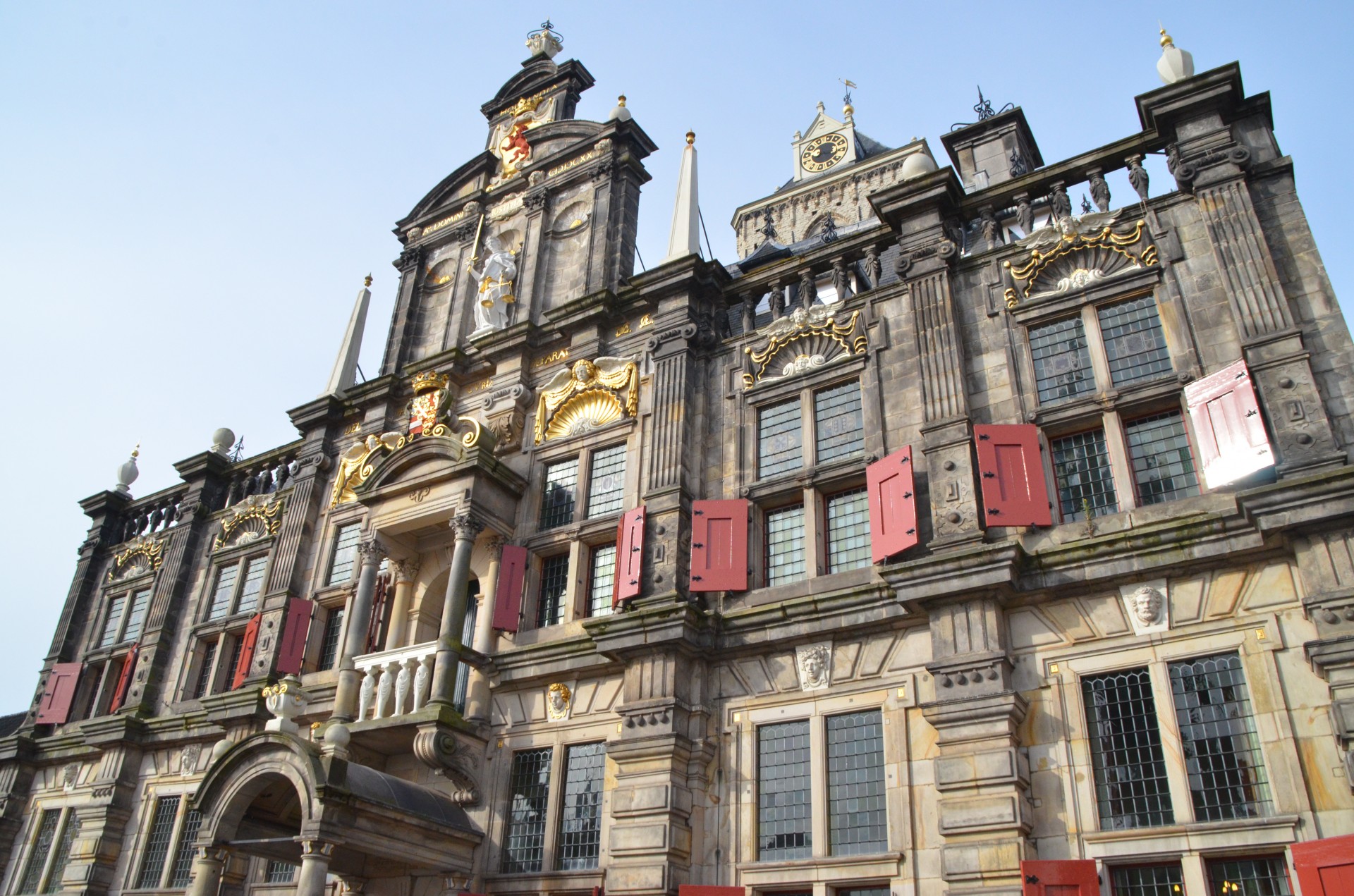
Directly across from the Stadhuis is the Nieuwe Kerk with its stupendous spire.
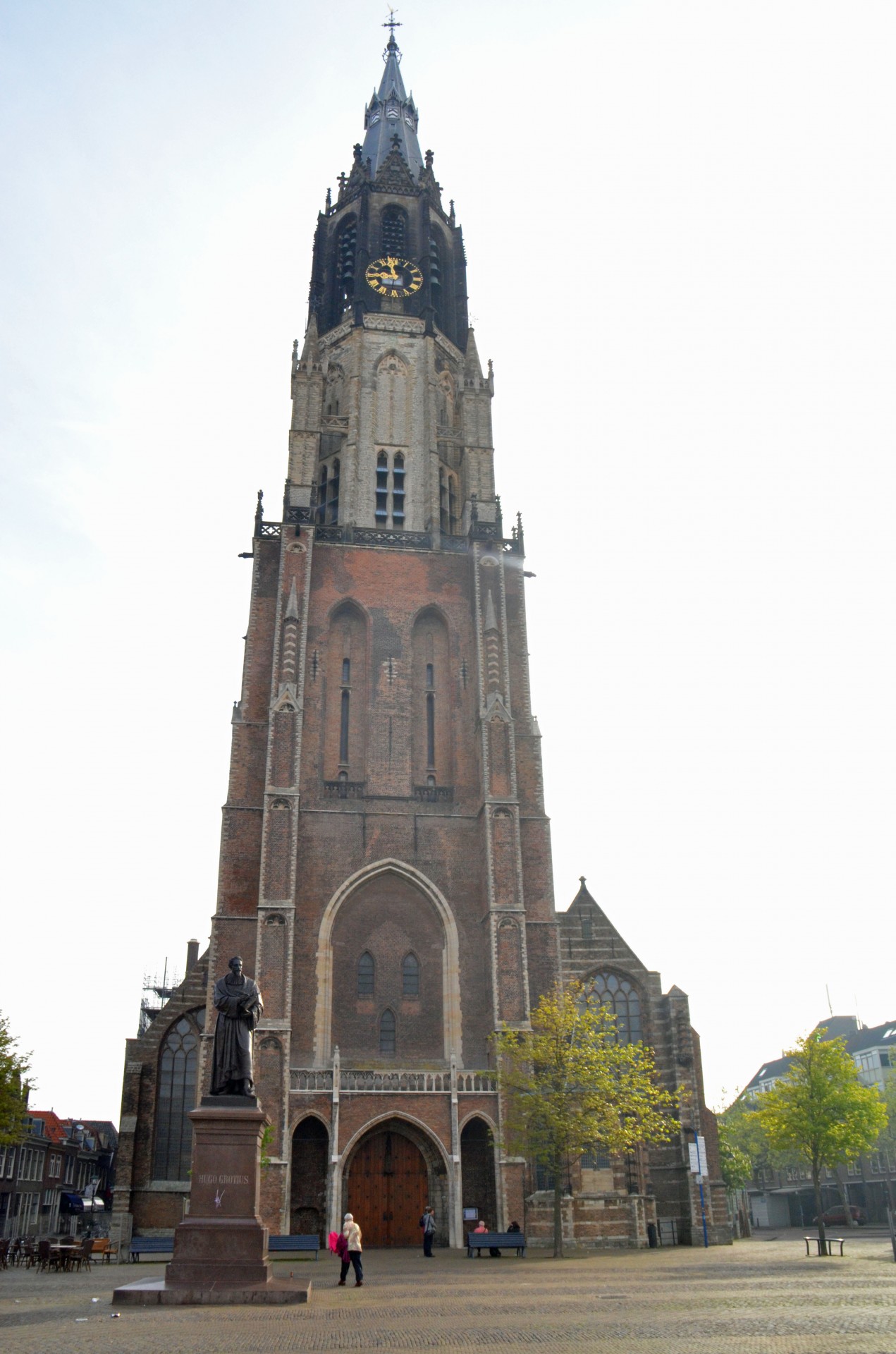
Notice the statue to the left – that’s the great Hugo Grotius another one of Delft’s famous forefathers. I’ll just go visit him.
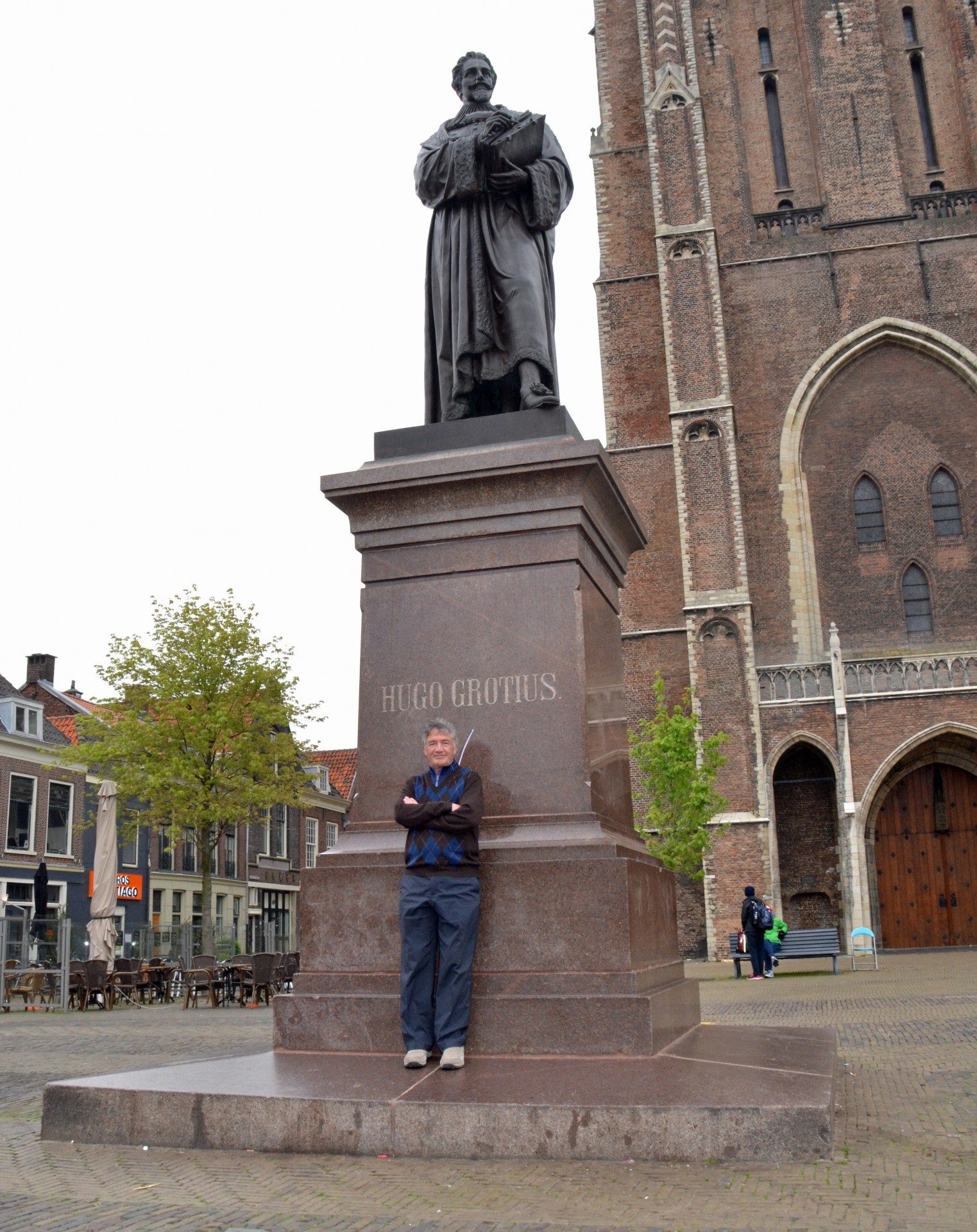
The reason I’m standing where I am is to conceal graffiti that some a**hole sprayed on the statue. If there was ever a reason to bring back public floggings I think it should be for graffiti vandals who deface public monuments. It’s a slap in the face to every decent citizen who cares about the past. While I’m actually a fan of some of the things that Anonymous does, I just can’t stand unwanted graffiti. Yes there is a place for it in a few limited circumstances, like the background for Rick Mercer’s rants, but usually it’s a modern urban plague.
Now that I’m finished my own rant, back to Hugo. He is almost single-handedly responsible for the creation of international law, a doctrine to which nations pay heed rather than individuals. His concept of freedom of the high seas is still in effect today. Unfortunately for Hugo the seas themselves did not respect his laws and he died after being shipwrecked on the coast of Germany. Tomorrow we will visit one of his legacies, the World Court in The Hague.
How many lawyers do you know that get their own statues? Way to go Hugo.
The Oude Kerk
Now it’s off to visit the Oude Kerk where some very famous people are interred. This is the church with the leaning tower that we saw yesterday from the canal. In modern Holland the stats I’ve seen indicate that no more than 5% of the population are regular church goers. This is obviously way too low a number to provide the type of financial support that a huge gothic cathedral requires so the Oude Kerk is no longer operated by the church, although it can still be used for weddings and funerals. All of the great Dutch cathedrals were originally built by the Catholic church and then stripped of most their interior ornamentation after the Protestant Reformation and the Oude Kerk of Delft is no exception. Still, it is an impressive interior as you see from this picture I got from a Wikipedia article. In my experience it’s a fool’s errand to try and photograph the interiors of great buildings with anything less than professional grade cameras.
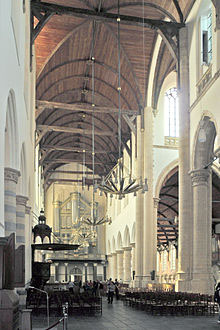
There are three great pipe organs of which this one is the most impressive.
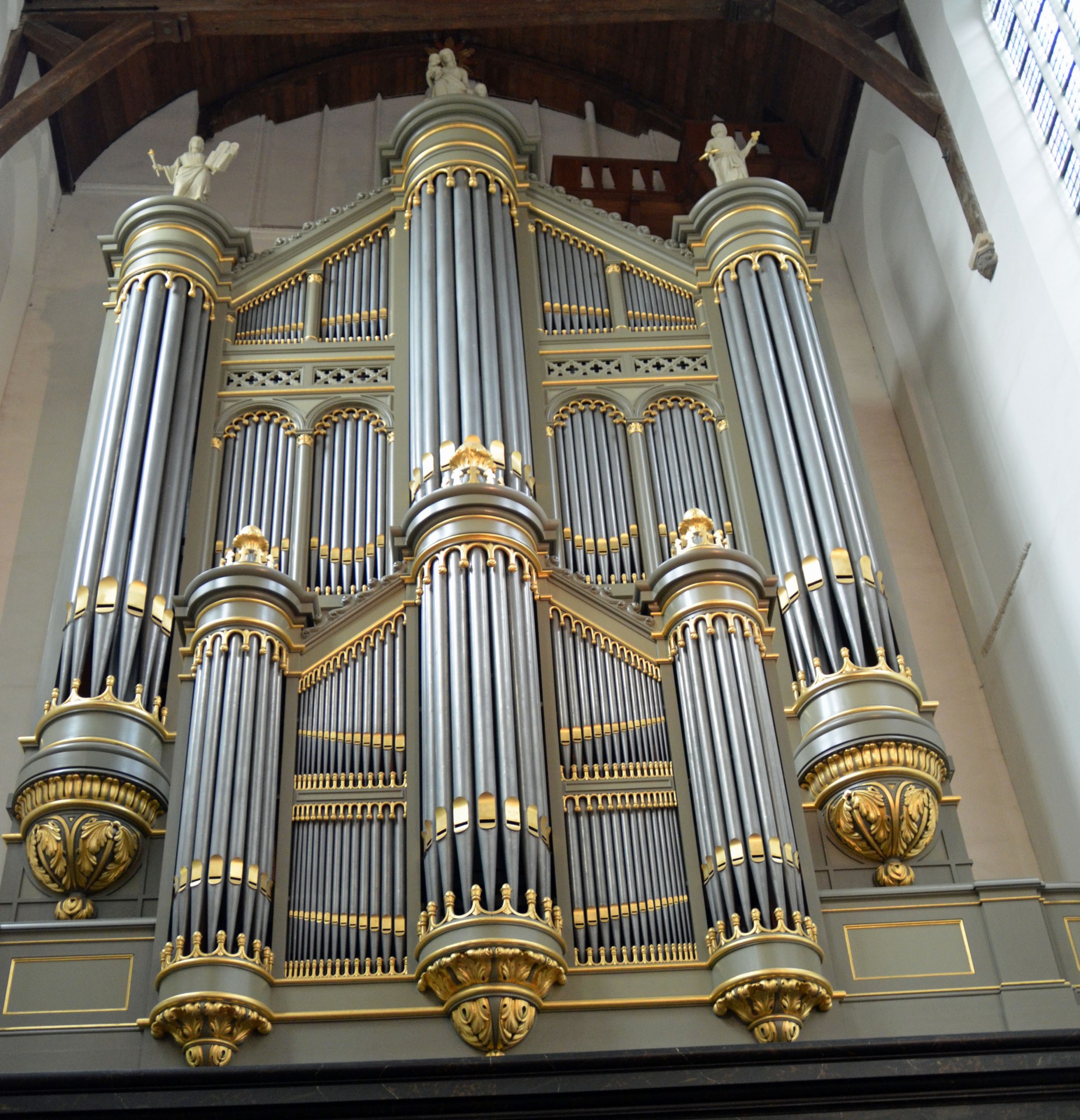
However, the real reason I’m here is the see the final resting place of some of Holland’s greatest sons. Let’s start with this very ornate tribute to the famous Dutch admiral Maarten Tromp who was eventually killed in battle. As he rests on a blanket covering a cannon, I could not help but thinking, “Live by the cannon, die by the cannon”. The Dutch artist Hendrick van Vliet painted many interiors of the Oude Kerk including this one that features the Tromp memorial.
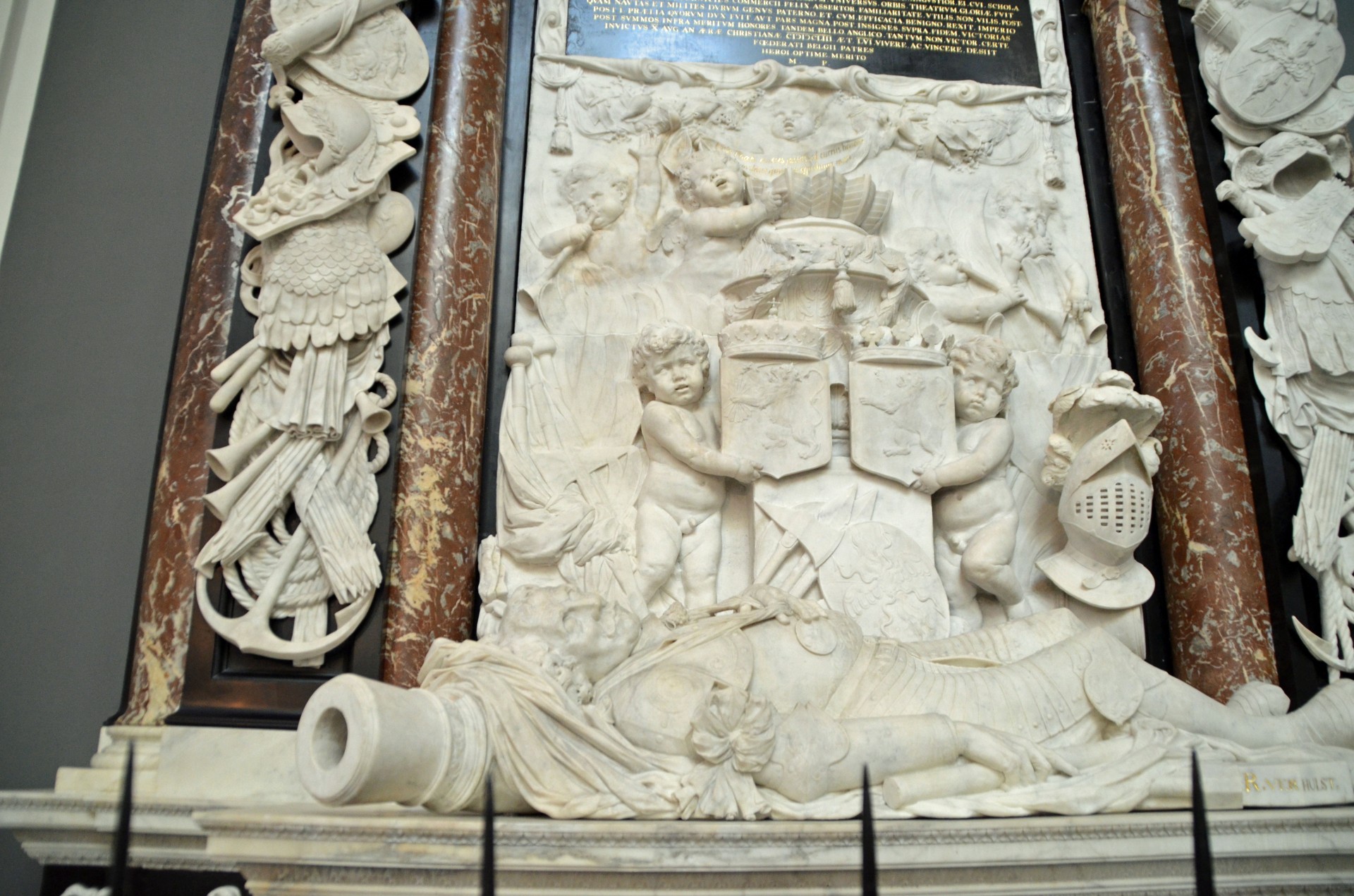
Next are the two floorstones for Vermeer. Most people only get one final resting place, but Vermeer got two. This one was the first when the good burgers of Delft thought that Vermeer was just another dead bankrupt bum.
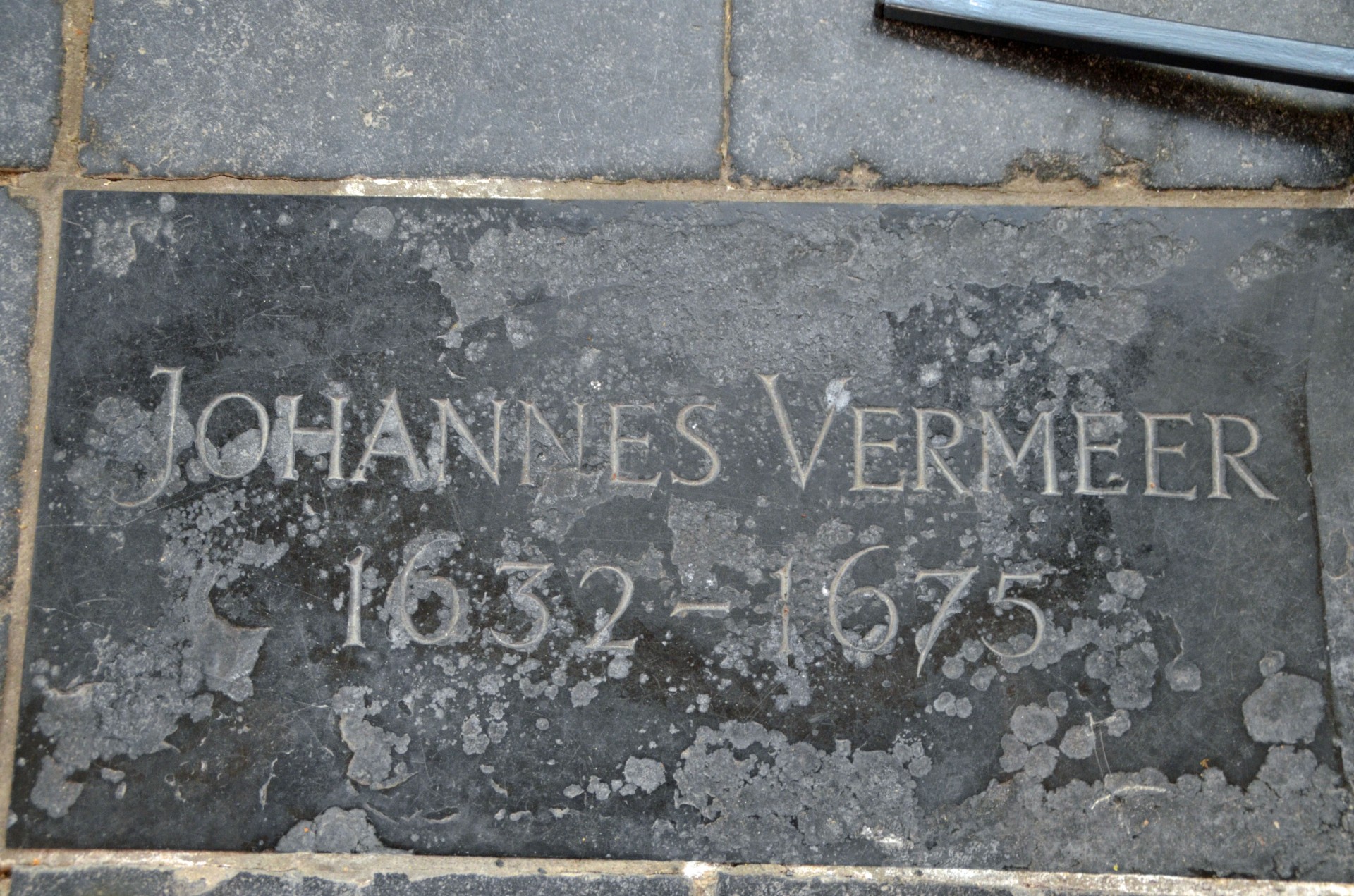
Here’s the second one given to him after he became posthumously famous. Why the goat, I don’t know.
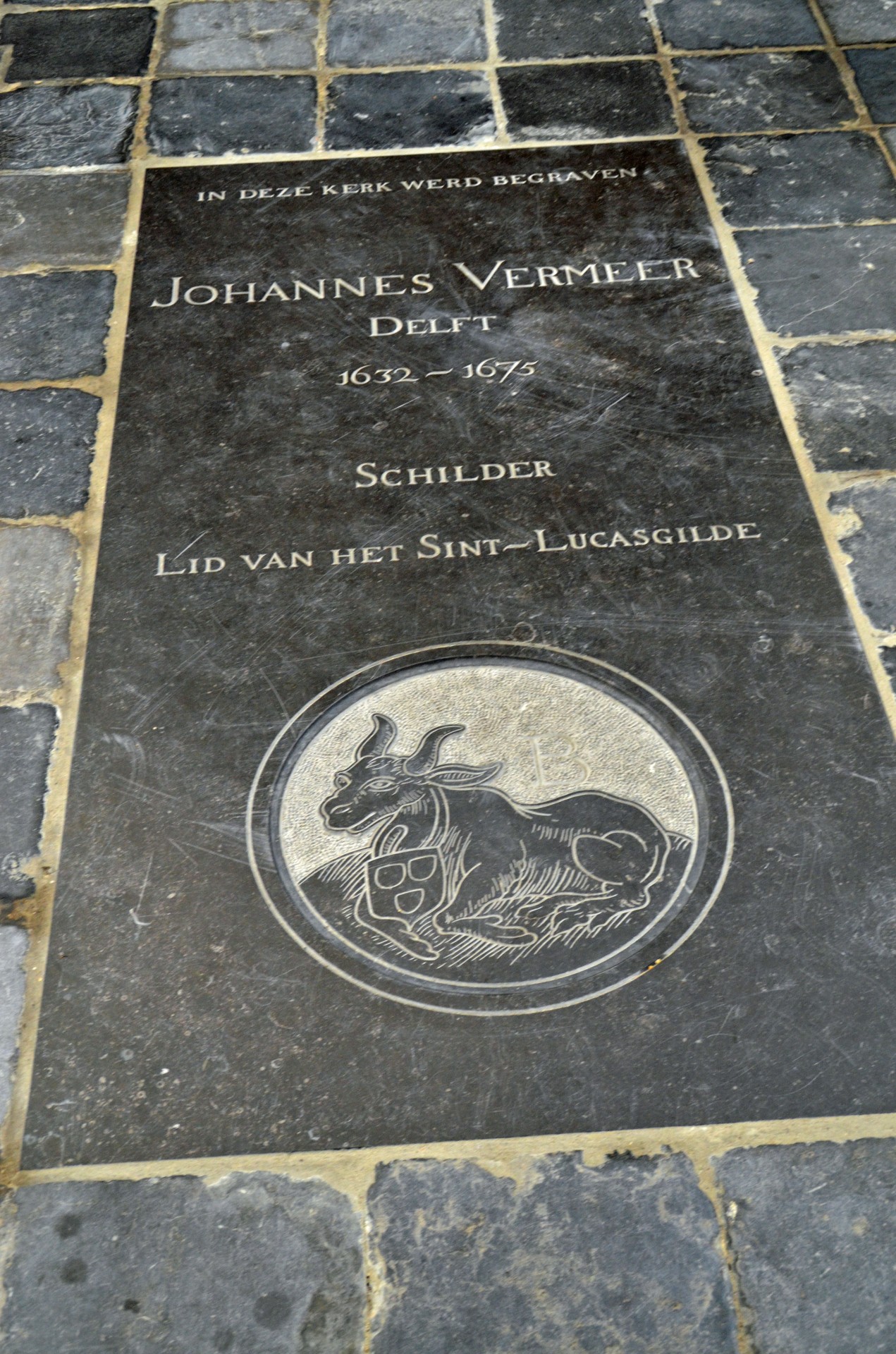
The one famous Delft personality I have not mentioned yet is Antonie van Leeuwenhoek, who as the developer of the microscope and subsequent discoverer of the microorganisms that are essential to all life, is arguably the greatest of them all. This is his final resting place.
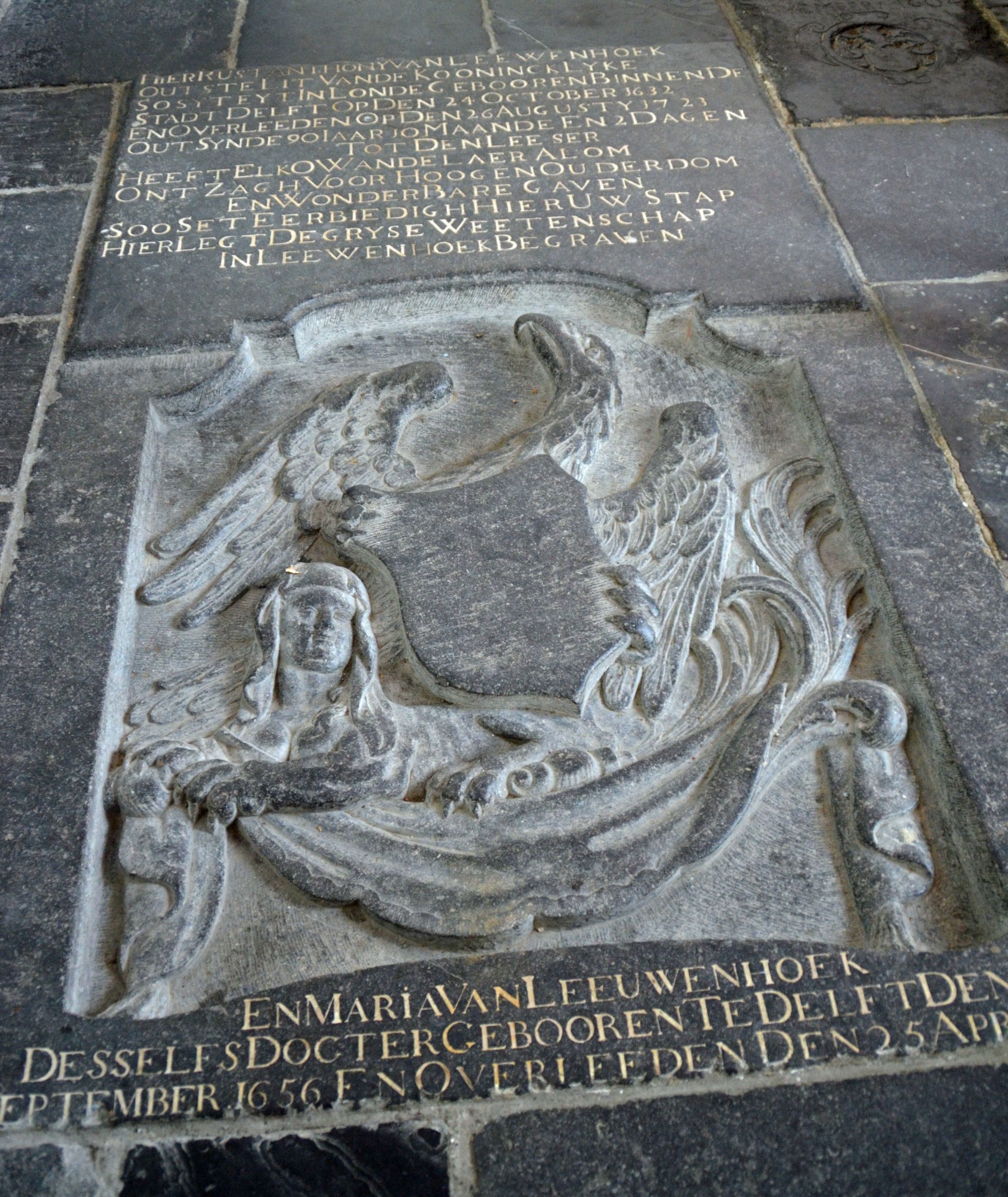
One final stone that caught my attention in the Oude Kerk is this one that has to be about as creepy as it gets – note the beckoning hand welcoming the deceased to hell, because I doubt very much this would be the keeper of the pearly gates.
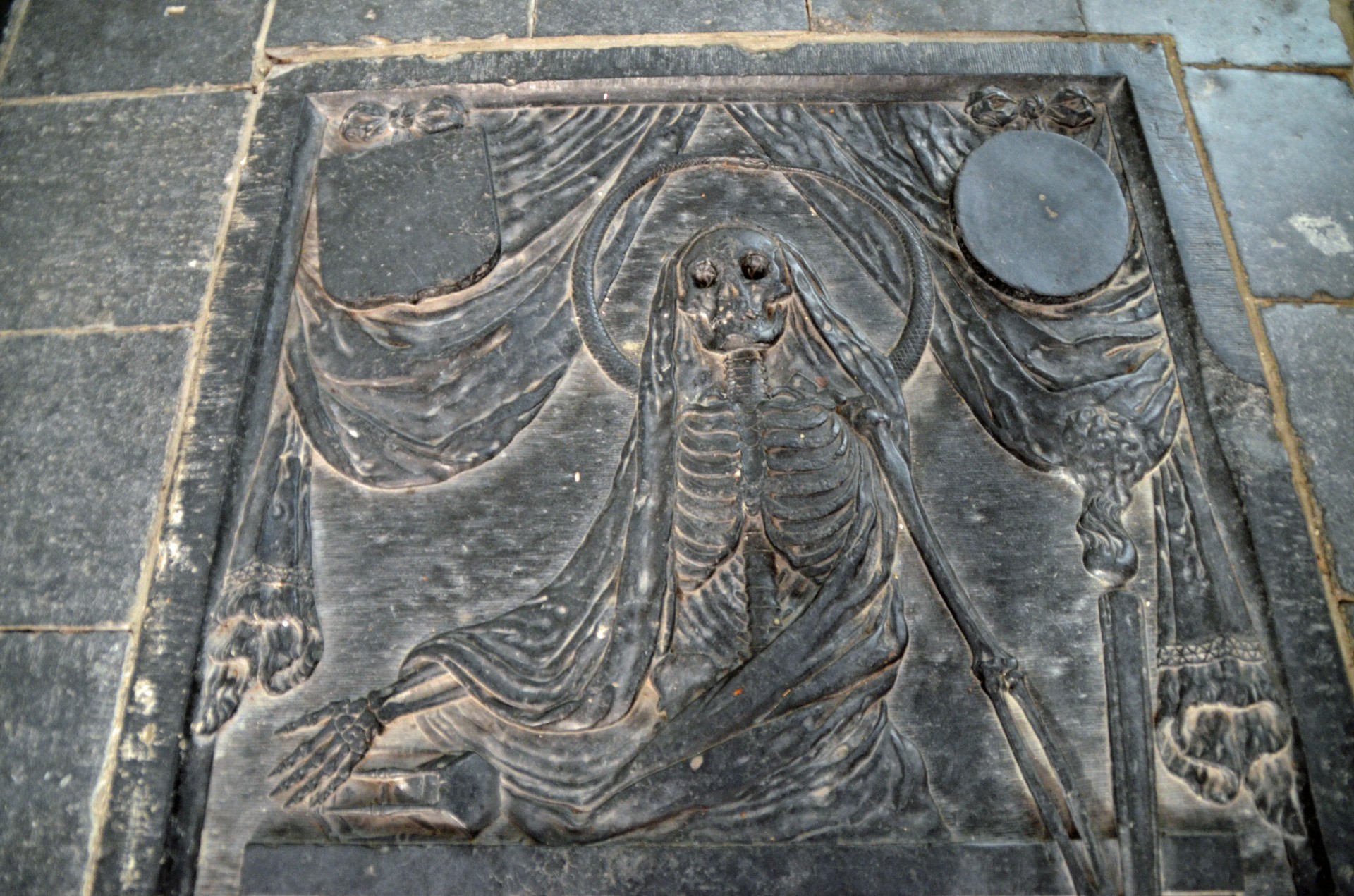
The Nieuwe Kerk
The Nieuwe Kerk was apparently founded on the spot where a beggar and his benefactor saw a vision of a huge church which later turned out to have been nothing more than marsh gas. By then it was too late and the church was well underway. I’m glad they didn’t stop construction because the Nieuwe Kerk has a great spire which you can climb to almost the very top which I will do shortly, but first the mausoleum of the founder of Holland, William of Orange aka William the Silent and not to be confused with the William of Orange who became King William III of England. As I mentioned in a previous post, he was assassinated in Delft and entombed here because his traditional family mausoleum in Breda was in enemy hands at the time. Thus began a tradition whereby all members of the Dutch royal family are buried in the Nieuwe Kerk, although only William of Orange’s mausoleum is on public display. Here it is and it’s pretty impressive. We had the church almost entirely to ourselves which is unusual for an iconic cathedral. Think of the crowds that throng Westminster Abbey or St. Peter’s.
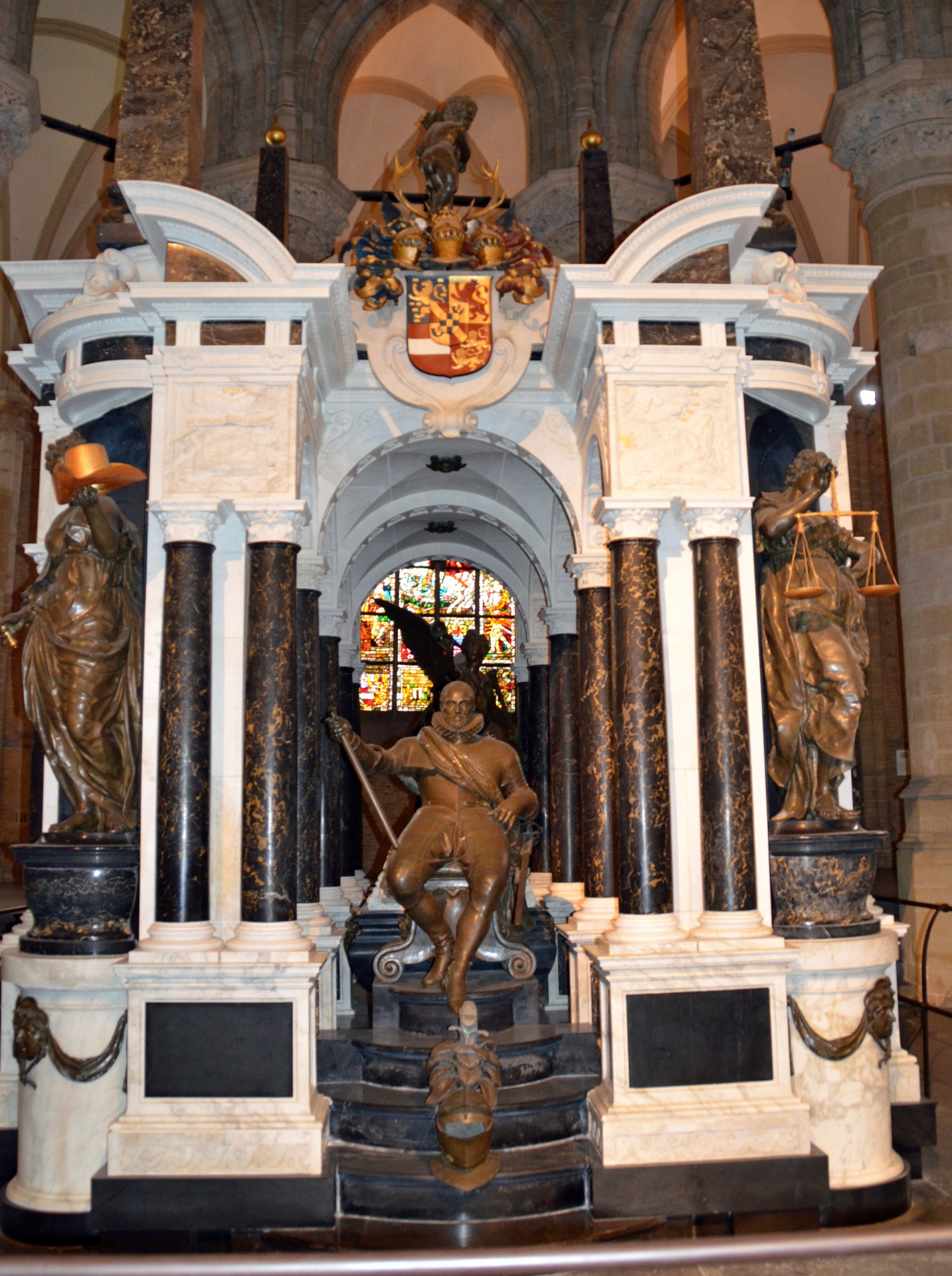
Right behind the mausoleum there is this stained glass panel dedicated to the Dutch royal family.
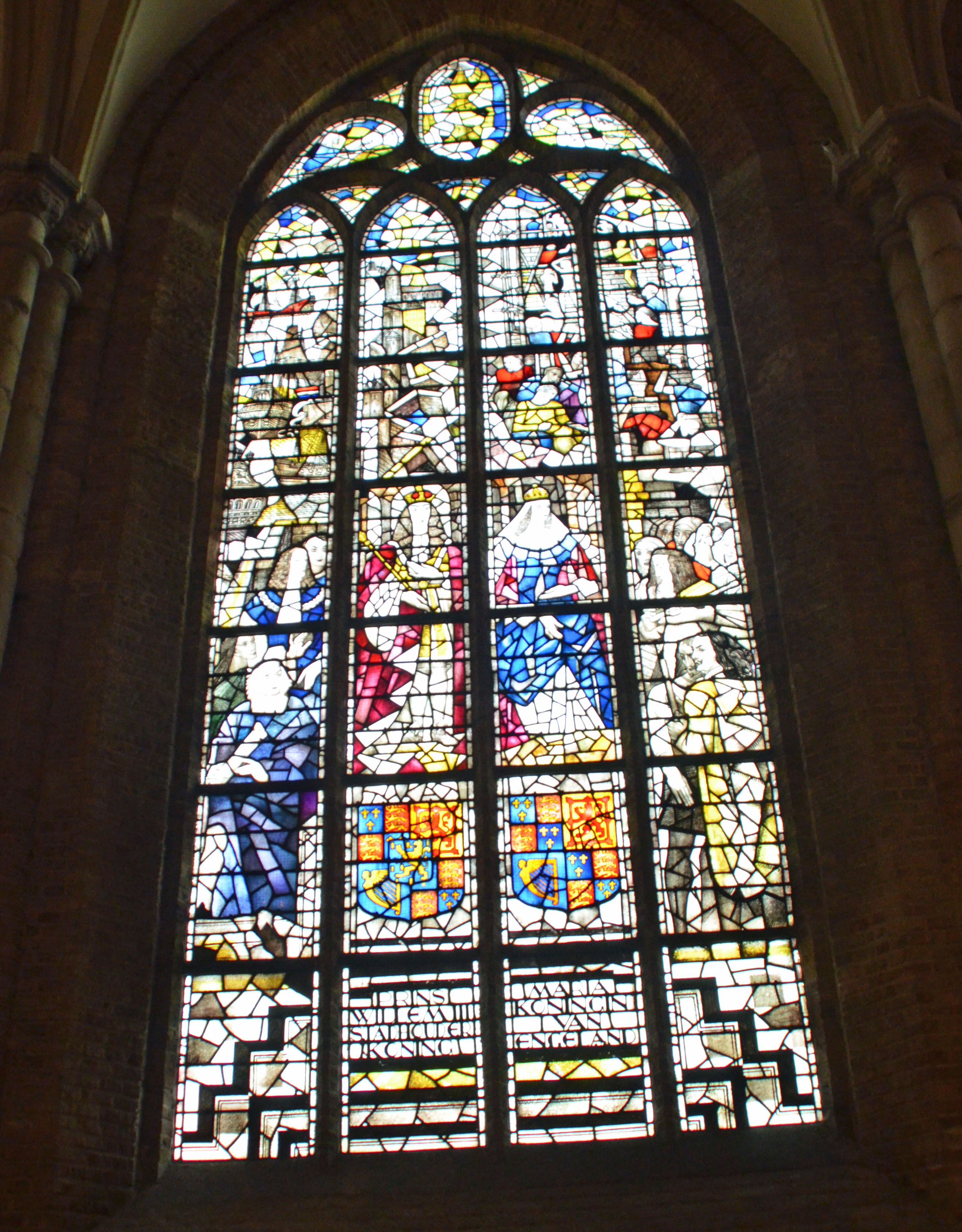
We paid an extra fee to gain access to the narrow winding stairway that leads to the almost the top of the spire. I never pass up a chance to climb these in cathedrals and bell towers as the views from the top are worth the effort expended in getting there. This was no exception. An Italian couple was on the outside viewing area at the top of the roof, about half way up, and we took their picture and they took ours.
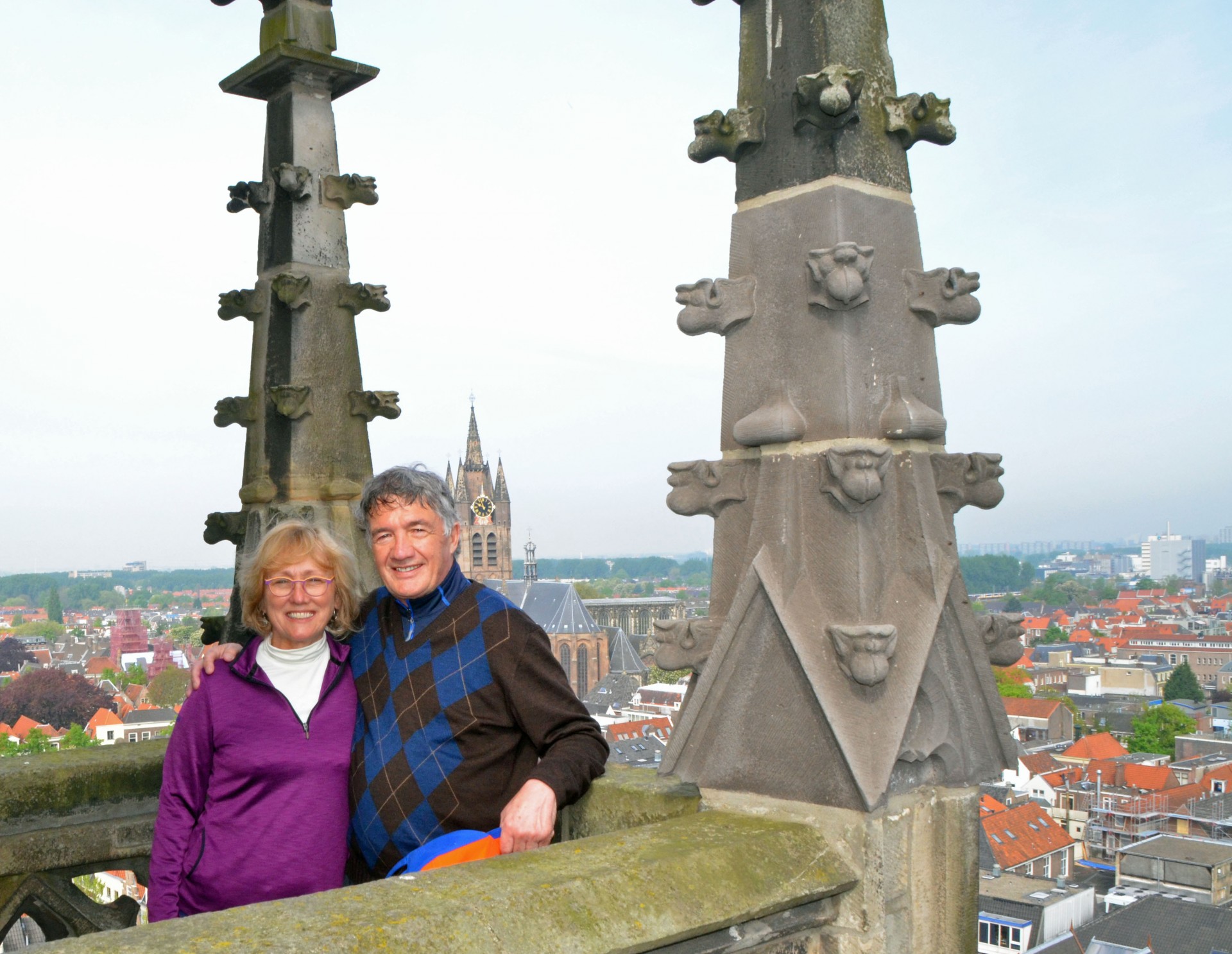
One of Vermeer’s most famous paintings is his View of Delft. That is the Nieuwe Kerk in the centre right.
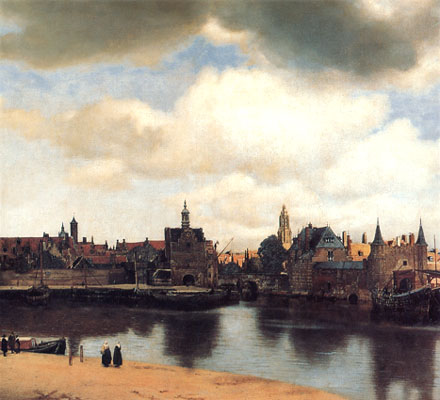
Here are my views of Delft from the spire of the Nieuwe Kerk. That’s the Stadhuis with the damn lorry still in front so the picture is a bit truncated.
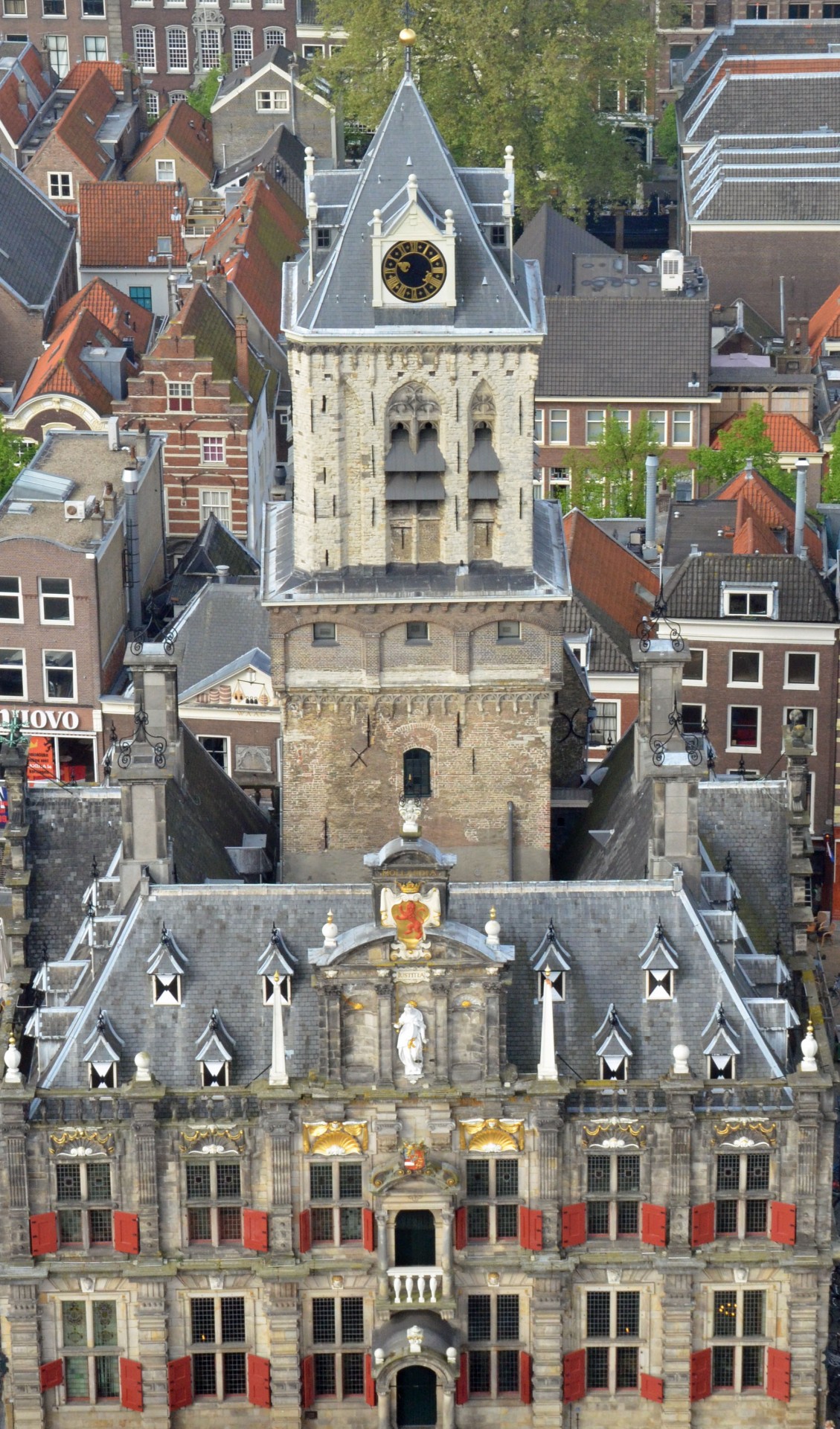
And that’s the Oude Kerk, looking much smaller and shorter than the Nieuwe Kerk.
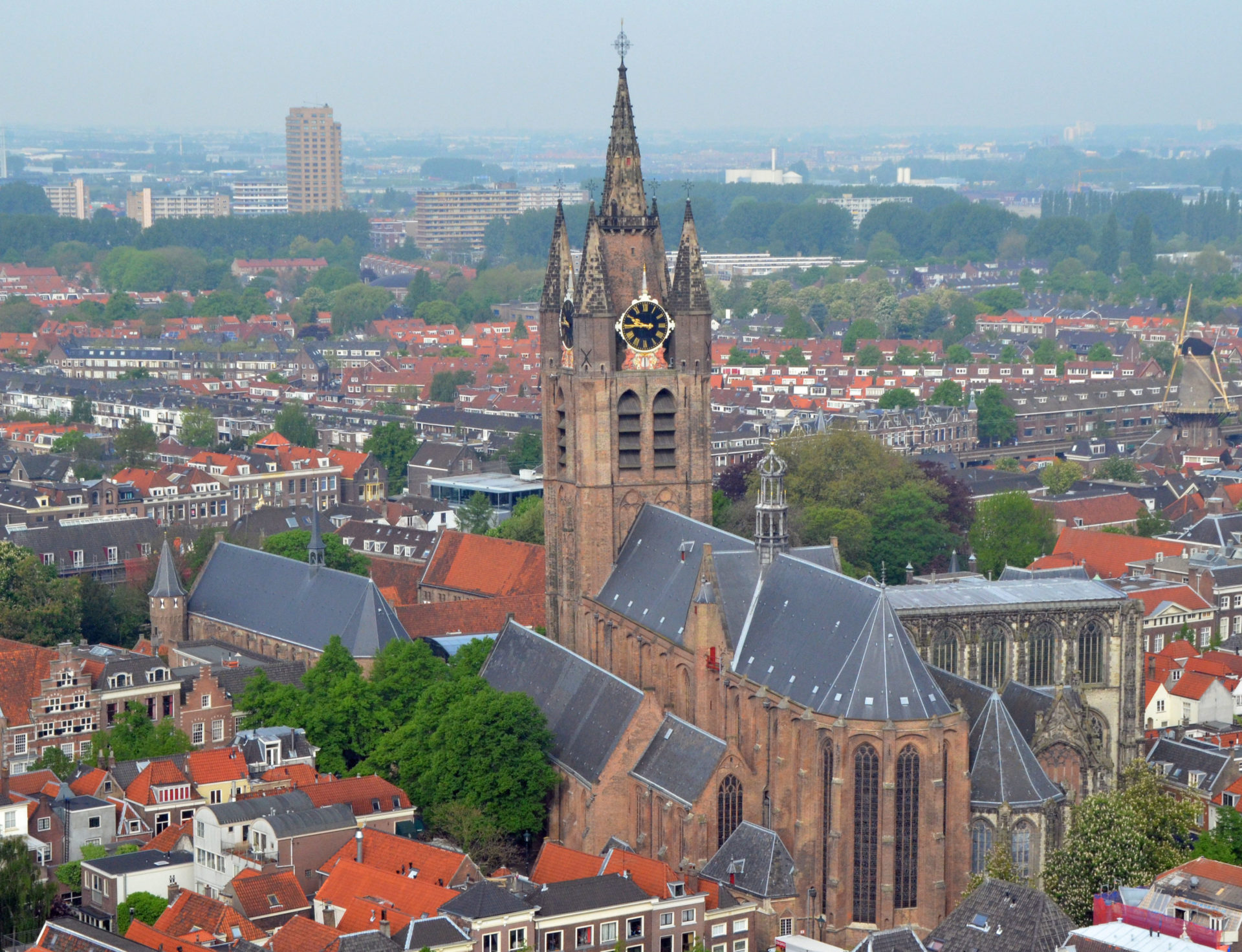
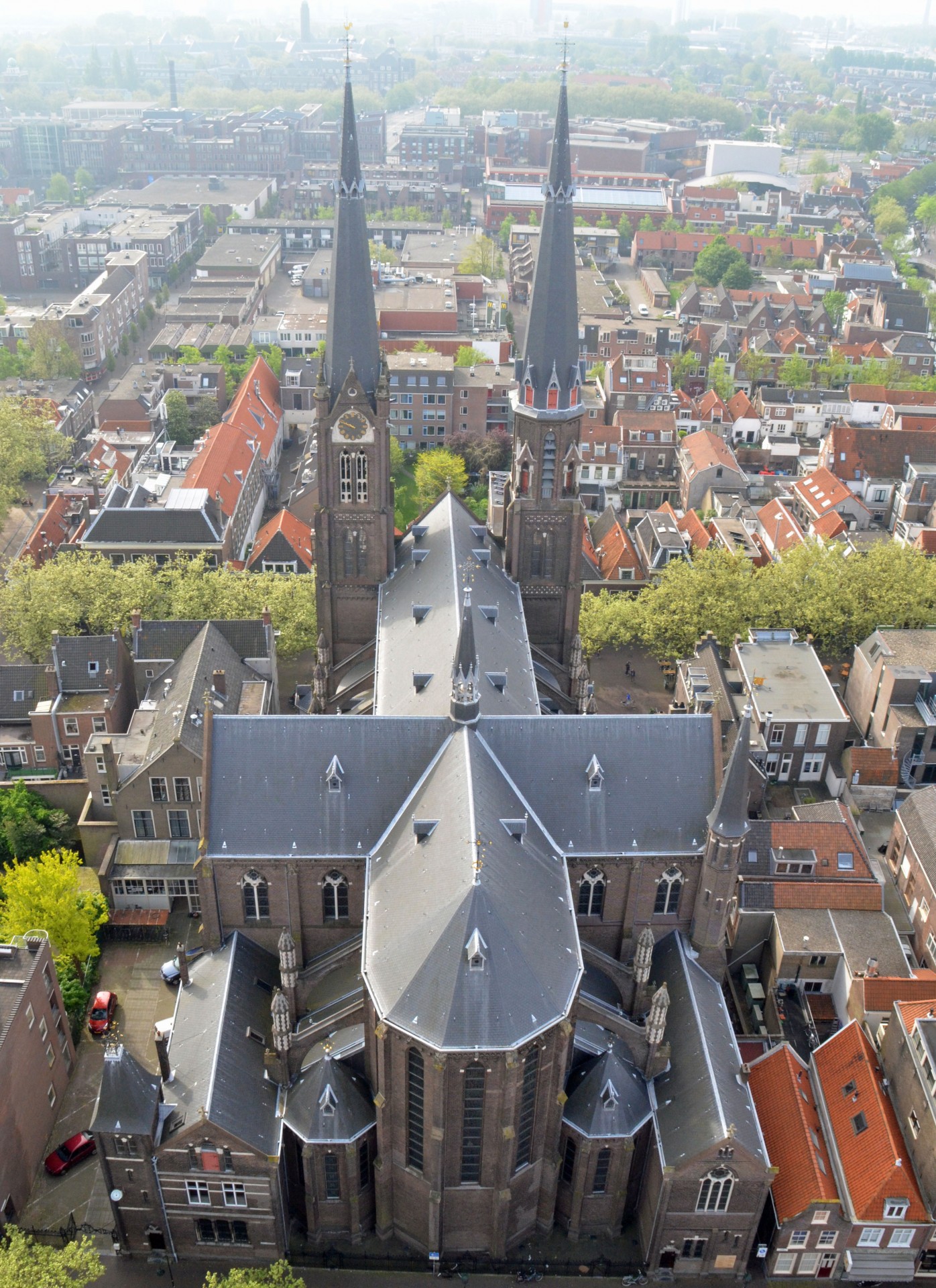
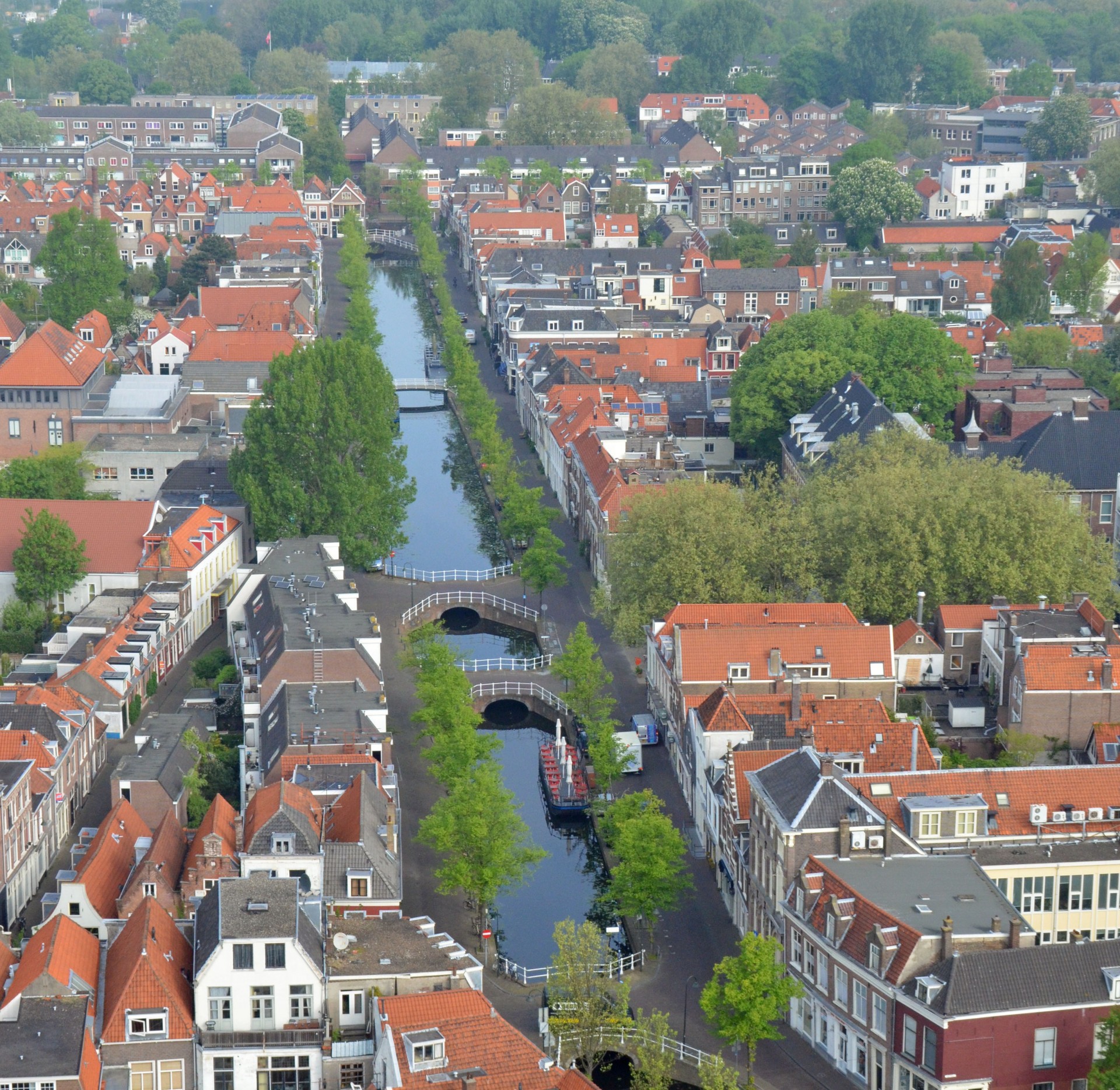
It was hard to tear ourselves away from the great views atop the spire, but we had to check out and get ourselves to The Hague for our final day in Holland. I’ll see you there. Tot ziens.

